Nearly a century after her death, French museums have at last recognised the generosity of one of the most extraordinary collectors of her era, the Marchesa Arconati Visconti (1840–1923). A special route through the Musée des Arts Décoratifs in Paris, launched last autumn, allows visitors to discover the bequests and biography of this fiercely intellectual woman of anticlerical and republican sympathies, acquired in part from her father, the politician Alphonse Peyrat, and shared with her first husband, an exiled Italian aristocrat devoted to the Risorgimento. Her life’s goal, so she told one interlocutor, was to promote the arts and sciences, and through that enterprise work for a ‘superior humanity’. Zealous in the pursuit of truth, the so-called marquise rouge was a committed Dreyfusard – corresponding with the scapegoated Jewish officer until her death – and a major benefactor to the University of Paris. The critic Gustave Lanson hailed her as a ‘professional philanthropist’.
Museums in Lyon, Angers and Paris were enriched by her gifts of money and art, not least the Louvre, where she had built close friendships with curatorial staff such as Émile Molinier. An exquisite tondo by Desiderio da Settignano that she donated in 1914, known as the ‘Arconati-Visconti Tondo’, testifies to her deep love of the quattrocento. This was a love not only derived from reading, and attending lectures at the Collège de France, but also fed by the dream of reliving this golden age. Against the backdrop of her neo-Gothic chateau at Gaasbeek in Belgium, she delighted to pose for photographs in 16th-century costume, like a matronly Sarah Bernhardt. After the death of her beloved adviser, Raoul Duseigneur, in 1916, the distraught marchesa insisted that a Renaissance period room named in his memory be installed in the Musée des Arts Décoratifs, its panelling, chimney breast and stained glass supplied from her own home.
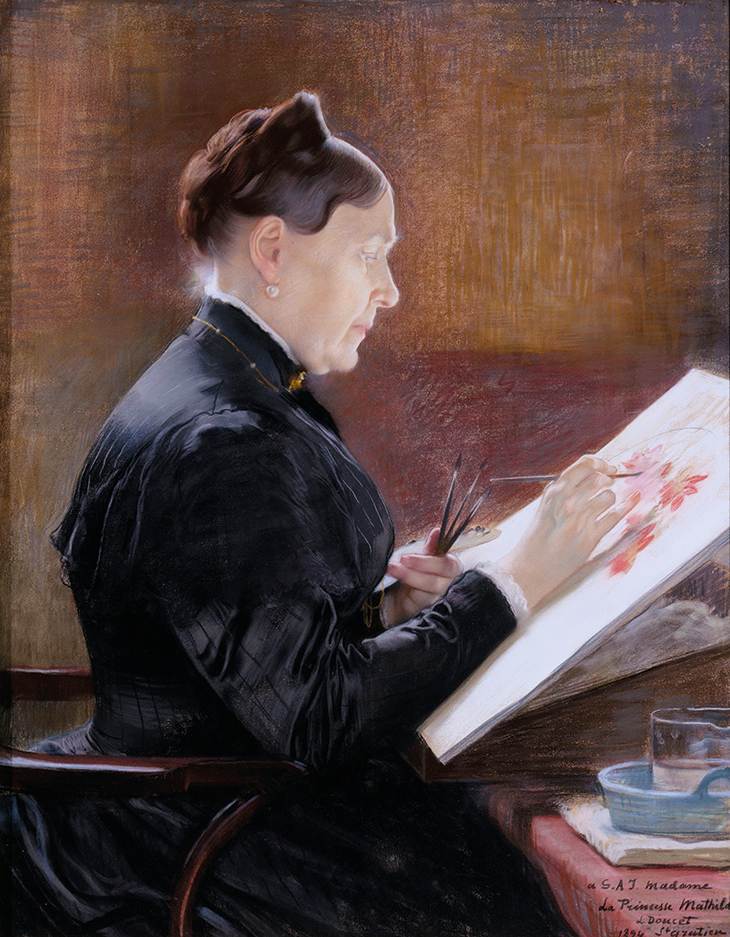
Portrait of Princesse Mathilde (1894), Henri-Lucien Doucet. Musée d’Orsay, Paris. Photo: RMN-GP (Château de Versaille)/Gerard Blot
Research into what other women contributed to French institutions at the close of the 19th century remains rudimentary. Female collectors are far less studied than either aristocratic female patrons of the old regime, or the doyennes of the 20th-century avant-garde. The barriers to French women becoming collectors in the period were both cultural and legal. Masculine collecting was described as a disciplined and scholarly pursuit; feminine acquisition was mere shopping. Those confirmed bachelors and misogynists the Goncourt brothers deplored the pretentions of female collectors: the Marchesa Arconati Visconti obviously irritated them ‘chatting about everything, seemingly having read everything […] throwing out opinions about Michelet, about the Revolution, about many things which do not normally trouble the minds of women’.
At the same time, the legal barriers remained considerable. Although the Revolution had introduced the principle of equal inheritance rights, the revisions of the Code Napoléon had strengthened paternal control and accorded to many husbands exclusive control over the couple’s joint assets. Women were barred from entering any legal agreement without the consent of their husbands. These inequalities agitated the French feminist press but remained in force until 1907. Such restrictions on married women’s independence explain why they rarely counted as collectors in their own right, although they often controlled the destiny of collections created by someone else. In Ris-Paquot’s encyclopaedic Répertoire des collectionneurs de la France et de l’étranger, of the 3,197 collectors listed for 1895–96, fewer than nine per cent of the total were women (and most of them were inheritors of collections built by their husbands or fathers).
As legatees, women could nonetheless play a fundamental role in shaping which works of art entered public institutions, although their individual contribution was often concealed behind the family name. It is easy to mistake objects given in memory of a male relative for gifts from that deceased relative himself. The Musée Magnin in Dijon emerged from the 1,700 artworks bought by Maurice Magnin and his sister Jeanne between 1881 and 1935; although the hôtel initially bore his name alone, it was she who catalogued the collection, as well as that of the paintings in Besançon and Dole museums. In Marseilles, the Musée Grobet-Labadié, created in 1920, was overwhelmingly the achievement of Marie Grobet (née Labadié), who donated to the town works assembled by her father, herself, and her two husbands.
It was, however, very rare for women to found museums outright in 19th-century France, although there are fascinating exceptions, like the Old Masters gallery founded by the Comtesse d’Héricourt de Valincourt at the town of La Fère in the 1860s. Far more commonly, women have been associated with the decorative arts and the domestic interior, a tradition which can be traced back to the old regime. Throughout the belle époque fashionable Parisian salons remained a theatre of distinction, which required appropriate furnishings to trigger conversation and reverie; even ‘a woman who never studied history’, Proust observed wryly of society hostesses, ‘spends two years in the Cabinet des Estampes working on her mansion, in the company of connoisseurs’. Yet these private interiors were ephemeral as models of taste, since they disappeared at the death of their creator.
The desire to make something permanent out of female collecting was strengthened thanks to another tradition inherited from the old regime: the femme artiste. In an important recent monograph, Séverine Sofio has identified the parenthèse enchantée or magic interval from the 1750s to the 1850s, in which female painters achieved relative parity with their male counterparts. This interval opened thanks to the new status afforded to artistes libres of both sexes in the late 18th century, and the willingness of anti-academic painters such as Greuze and David to accept female pupils (especially those from illustrious families). By the 1840s, one in five painters in the Salon was female, and the proportion of women exhibitors receiving a medal (six per cent) was the same as for men. This acclaim was short-lived, though, and by the 1880s women felt the need to form their own separatist organisations, such as the Union des femmes peintres et sculptures, to recover from a drastic decline in visibility and official recognition.
Even in an era of backlash, the studios of Paris still offered an unparalleled resource for aspiring women artists from across the world. Training at institutions like the Académie Julian represented a crucial means of initiation into becoming an artist and, ultimately, a connoisseur; an autodidact with modest means, Jeanne Magnin’s knowledge of art began with her studies under the landscapist Henri Harpignies (she submitted scenic views painted on glass to the Exposition Universelle in 1889). Amateur drawing classes and art appreciation also remained integral to the education of girls from good families. Leading Parisian society ladies cultivated the visual arts, and were willing to submit their works for public scrutiny: the Société d’aquarellistes, founded in 1879, numbered among its supporters and exhibitors the Baronne Charlotte de Rothschild and the salonnière Madeleine Lemaire, friend and illustrator of Proust.
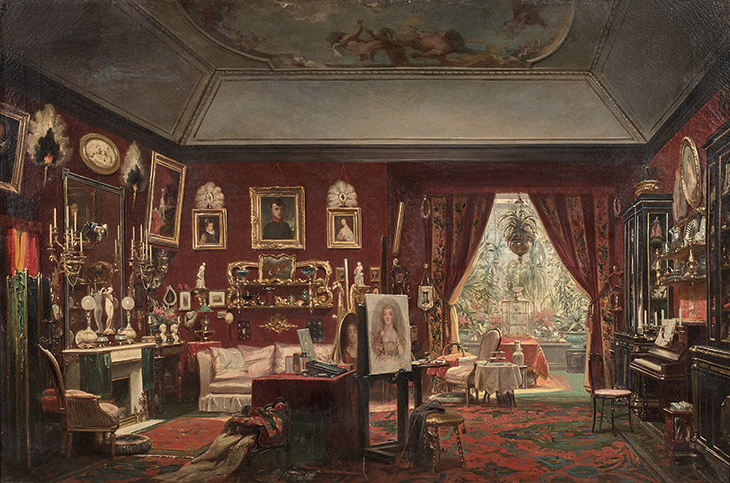
Princesse Mathilde’s salon-atelier, rue de Courcelles (c. 1857), Sébastien-Charles Giraud. Private collection
In 2019 a superb exhibition at the Palais Fesch in Ajaccio spotlighted the sophisticated figure of Princesse Mathilde, niece of Napoleon I, who was both an outstanding society hostess and a committed amateur painter. Mathilde had received training in drawing as a girl from Ida Botti Scifoni in Florence, although her two most important tutors were Ernest Hébert and Eugène Giraud, both of whose work she acquired. Between 1857 and 1867 Mathilde would exhibit no fewer than 17 watercolours at the Salon, compositions that reveal her fluency as a copyist and deep familiarity with the public and private collections of her day. While she benefitted from the advice of leading curators, her taste was proudly idiosyncratic. She had no time for Delacroix or the Romantic school of 1830 so beloved by her estranged husband, Anatole Demidoff; nor did she care for classical or religious painting, far preferring modern Orientalism and anecdotal genre scenes. As confirmed by a letter in 1868 to Hébert and a painting by Sébastien-Charles Giraud, her intimate work space was also where she hung ‘thirty-five of my most beautiful anciens [historic pictures]’, proof that creating and collecting art were closely allied endeavours for the princess.
An international cohort of femmes artistes, all trained in Paris, took the lead in establishing museums across Europe. American-born Anna Klumpke, a one-time student at the Académie Julian, preserved the studio of her companion, Rosa Bonheur, in the Fontainebleau forest. Having exhibited landscapes four times at the Salon in the 1860s, Joséphine Bowes became co-founder of the eponymous museum in County Durham in 1869 (although she did not envisage her own work as part of the permanent collection).
Her modesty contrasts with the Swiss-born Adèle d’Affry, who through marriage became the Duchess Castiglione-Colonna. It was only after her husband’s death that the duchess gave free rein to her artistic vocation in Rome, where she took lessons from Heinrich Max Imhof. Exhibiting under the name Marcello, she emerged as a major sculptor in the Second Empire. Patronised by the imperial court, she carved the statue of Pythia located under the grand staircase of Opéra Garnier. Courbet, a friend, painted her portrait in 1870. Her later years were marred by tuberculosis, and during a period of convalescence in Italy in 1876, she wrote a letter to her brother-in-law, outlining her plans for posterity: ‘My days are numbered. They have been shortened by the fatigue and concerns that are inseparable from artistic life […] It is thus natural that in compensation for what I have not been able to produce, there should remain a collection of what I have made, and these works, the products of my artistic life, should be brought together in my birthplace of Friborg in Switzerland.’ She died in 1879, and in 1881 a selection of her signature pieces was reproduced in bronze or marble by her designated sculptor – Narcisse Jacques – and displayed amid her collections of painting and furniture in the cantonal museum of Fribourg. She left 55,000 francs to maintain the site, but the Musée Marcello was dispersed in 1936.
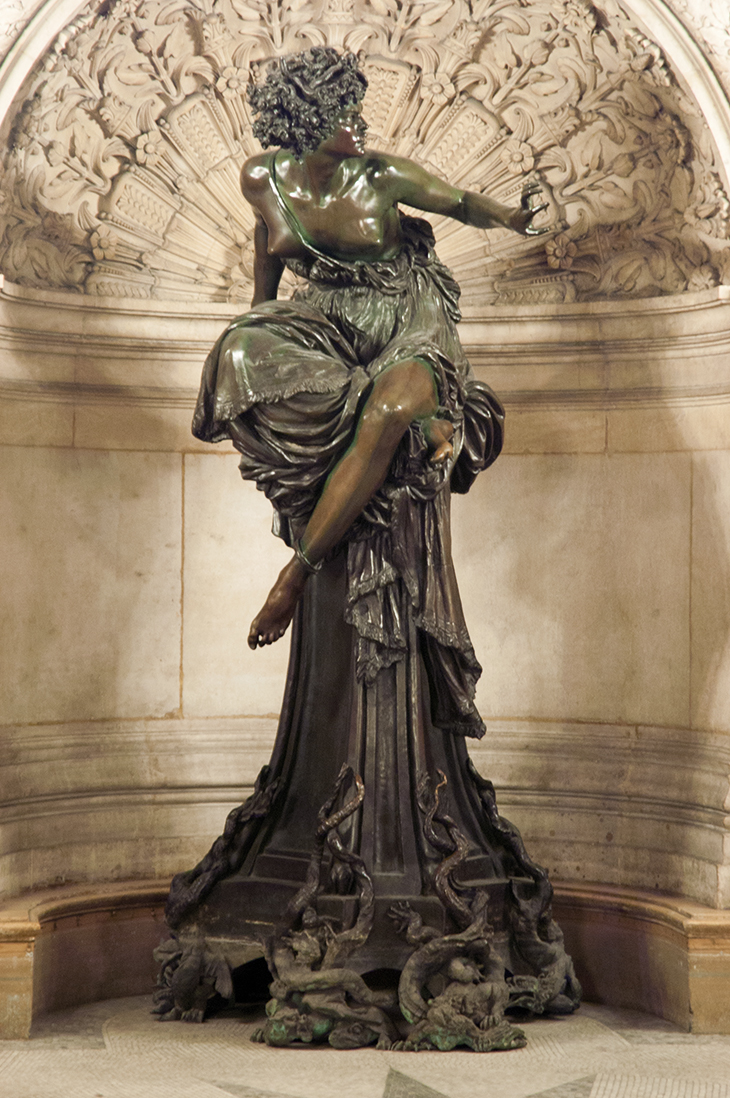
Basin of Pythia (1870), Marcello (Adèle d’Affry, Duchess of Castiglione-Colonna), installed in the Opéra Garnier, Paris. Photo: Lee Sandstead
As well as uncovering female patrons hidden in the archives, we might reconsider the artistic horizons of more familiar names. Tourists flock to the Musée Jacquemart-André on boulevard Haussmann, but know little about the career of its female co-founder. In 1857, aged just 17, Nélie Jacquemart had enrolled in the studio of Léon Coignet (thanks to the intervention of her protector, the remarkable Madame de Vatry). During the 1860s Nélie’s tactical Salon portraits of leading statesmen won her critical acclaim and commissions. In 1872, the Protestant banker and art collector Edmond André sat for her; eight years later, within three months of their re-acquaintance, he married her. Their union was unconsummated owing to André’s debilitating venereal disease – Nélie was teased in society as the Madonna (Vierge) of the Chair – but it brought her rank and an extraordinary fortune, which prompted her formal retirement from painting.
After her marriage, Nélie wanted to affirm that she was still every inch the artist. In 1892 she agreed to sit on the fine arts committee for the Exposition sur les arts de la femme, a pioneering showcase of women’s work across different media. Through her acquisitions, most importantly, Nélie demonstrated her cultural ambitions. While André was already a significant amateur, it was his wife who added some of the most distinctive accents to their Parisian mansion, such as the English portraits by Gainsborough, Reynolds and Romney, or the late medieval and Renaissance sculptures for the studiolo created on the first floor (Nélie had briefly considered founding a museum in Florence). After her husband’s death, she donated some of his treasures to the Louvre – such as a Memling panel, and busts by Carpeaux – but did not hesitate to rearrange or sell off other souvenirs of the André family. Opposite the dashing likeness of her husband by Winterhalter, she hung her self-portrait of c. 1880, unafraid of inviting comparison.
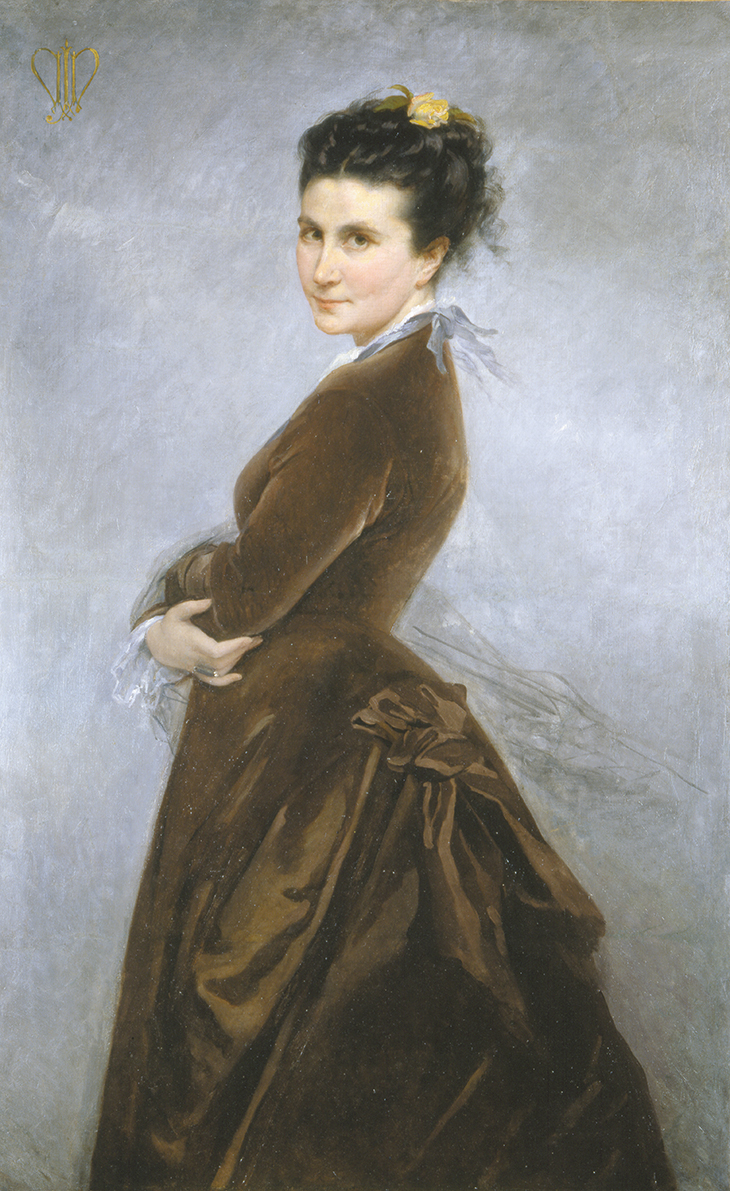
Self-Portrait (c. 1880), Nélie Jacquemart. Musée Jacquemart-André, Paris
For further proof of her independent tastes, one needs to travel to the ancient royal abbey and manor at Chaalis. In 1902, the widowed Nélie acquired the estate from Madame de Vatry’s heirs and set about embellishing and modernising this remarkable house-museum. She drew on the advice of leading curators – such as Louis Courajod and Wilhelm von Bode – as she bought up crate-loads of artworks from across Europe. Two anonymous panels she acquired for her ‘monk’s room’ have since been attributed to Giotto. Besides frequent travels in Italy, in 1901 she ventured to Egypt and in subsequent years to Syria, India and Burma. The journeys were commemorated in an Indian room, featuring a magnificent Burmese buddha and elephant rug; no stranger to royalty, she entertained the Maharajah of Kapurthala in this environment, just as she mixed regularly with the Orléans princes. Due to its geographical proximity to Ermenonville, where Rousseau is buried, souvenirs of the philosopher were also gathered at Chaalis (including his sensitive bust by Houdon).
In her will, Nélie bequeathed her properties to the Institut de France, describing Chaalis as ‘one of the most admirable landscapes in France’. In recompense, the Institut commissioned Denys Puech to produce a bronze sculpture for the tomb where she chose to be buried, in the ancient chapel decorated with frescoes by Primaticcio. Puech depicted her as the recumbent mistress of the Chaalis estate, still clutching a palette in her hands. In Nélie Jacquemart the roles of artist, hostess and voracious collector were seamlessly combined.
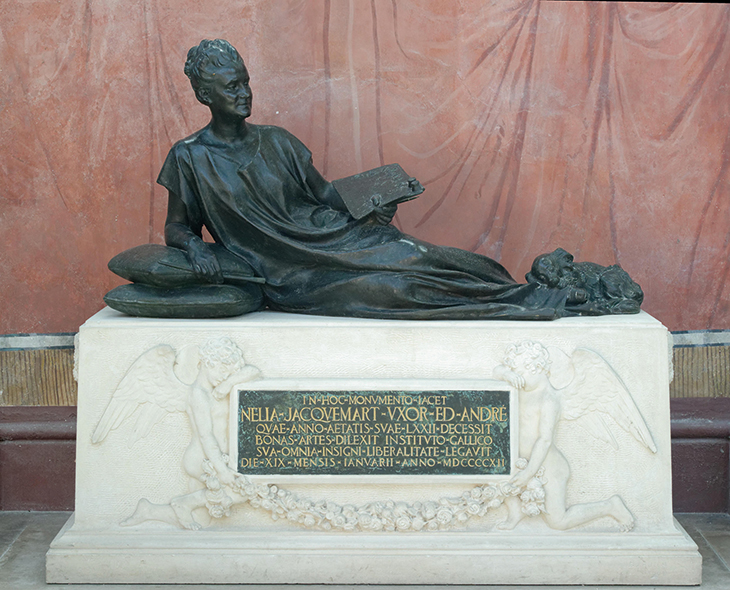
Nélie Jacquemart’s tomb, with a sculpture by Denys Puech commissioned by the Institut de France, in the chapel at Chaalis Abbey, Oise. Photo: History and Art Collection/Alamy Stock Photo
Thanks to distinct social conditions – including opportunities for travel, the climax of mondain sociability, the esteem for interior decorating, and the steady expansion of women’s artistic training – female collectors enjoyed their own parenthèse enchantée in the late 19th century. Much of women’s creative engagement with the arts continued to be centred on the home and disappeared from view at their death; in the early 20th century their efforts were often dismissed as decorative or frivolous by a rising generation of (male) connoisseurs and curators. But in a few instances, women also became important donors or funders of civic institutions and, emboldened by their self-confidence as artists, some, like Nélie Jacquemart, succeeded in translating their personal vision into an enduring monument.
Collecting can therefore be considered as another vehicle for cultural expression in the era of the ‘new woman’. Nicknamed ‘Toche’, Augustine Mathilde Bulteau (1860–1922) was a painter, photographer, feminist and author (under the pseudonym Foemina or Jacque Vontade). Her salon on avenue Wagram welcomed Léon Daudet, Maurice Barrès, Henri de Regnier and Jacques de Reinach, along with the painters Zuloaga, Utrillo and Forain. A devoted patron of Maxime Dethomas, friend of Toulouse-Lautrec and model for Fernand Khnopff, in 1923 Madame Bulteau joined the Marchesa Arconati Visconti by becoming a donor to the Louvre (of a 15th-century marble Pietà) and the Musée des Arts Décoratifs. The surviving albums or livres d’or from the parties held at her Château de Léry between 1883 and 1902 – replete with satirical watercolours by Dethomas and Edgar Giraudat, as well as photographs by la patronne herself – reveal the exuberant and bohemian milieu in which she made her acquisitions.
Putting women back into the history of collecting does not just correct a historic omission; it also reframes how we define the topic, exposing how buying art, making art and living with art were complementary pursuits. These figures remind us that collecting was enmeshed with women’s self-education, entertaining and the art of living well.
From the September 2020 issue of Apollo. Preview and subscribe here.
Unlimited access from just $16 every 3 months
Subscribe to get unlimited and exclusive access to the top art stories, interviews and exhibition reviews.

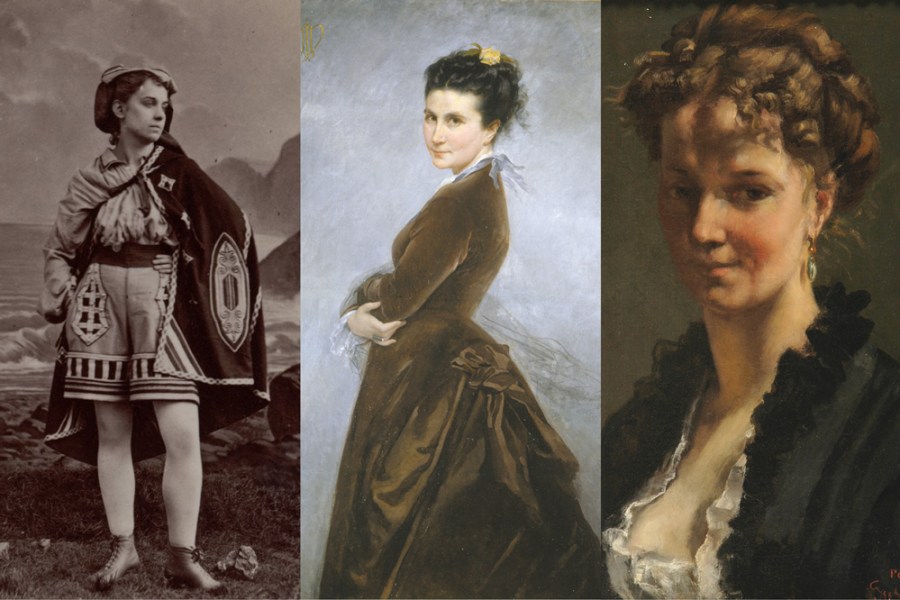
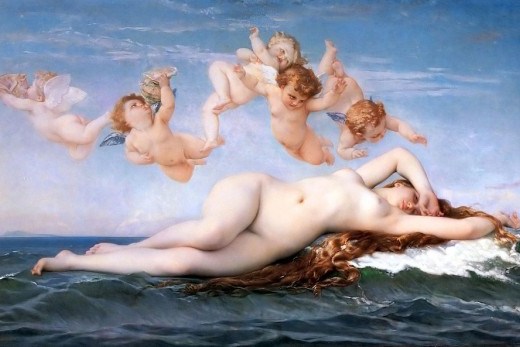

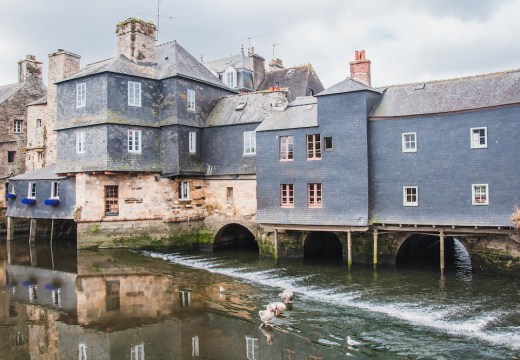









![Masterpiece [Re]discovery 2022. Photo: Ben Fisher Photography, courtesy of Masterpiece London](http://www.apollo-magazine.com/wp-content/uploads/2022/07/MPL2022_4263.jpg)
It’s time for the government of London to return to its rightful home